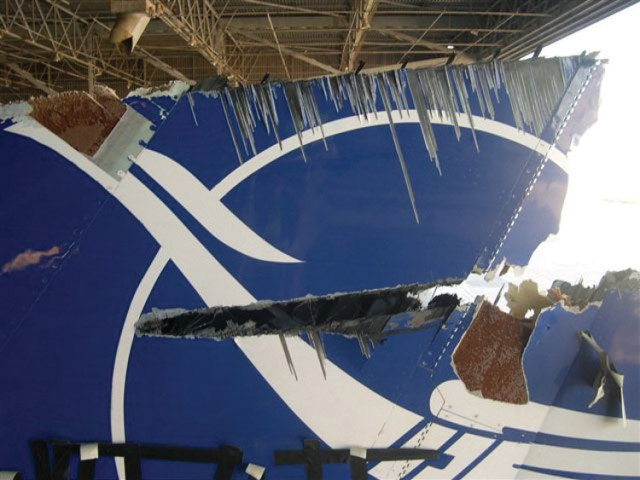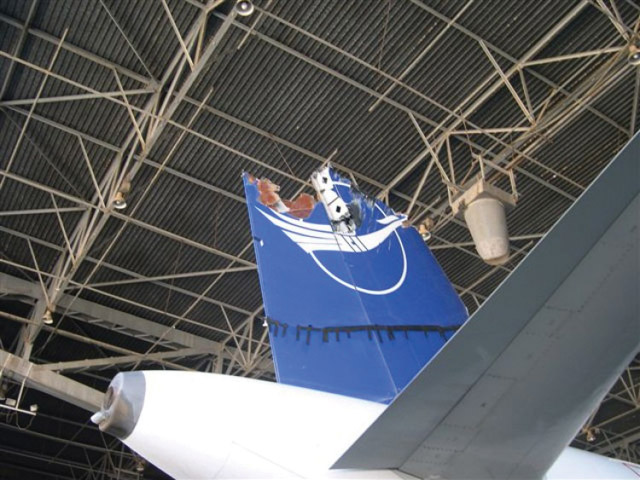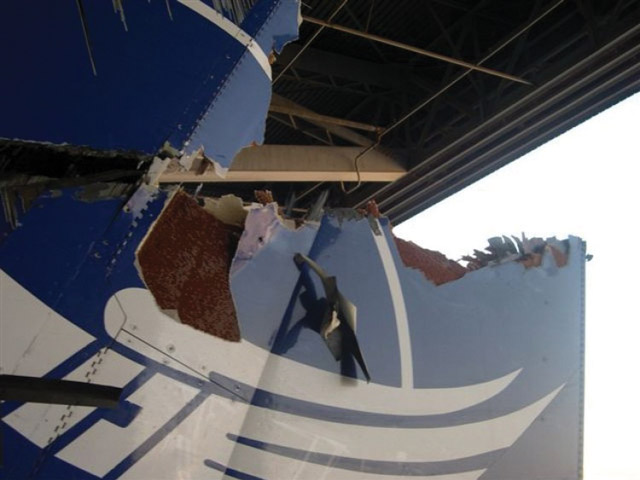Mystery still surrounds the circumstances of an apparent mid-air collision involving a Syrian Arab Airlines Airbus A320 that resulted in substantial damage to the twinjet's vertical fin.
The only verification of a collision came from a brief statement released by the ministry of information and carried by Syrian government media, which stated that a military helicopter - possibly a Mil Mi-17 or Mi-8 - had collided with the jet, which had returned to land at Damascus.
Unverified images of a Syrian Arab Airlines A320 in a hangar show damage to the fin and rudder consistent with at least two horizontal clockwise rotor blade strikes at a height of about 9.3m (30ft), ruling out a ground collision because the Mi-17's rotor height is too low.
 |
|---|
 |
 |
The lower half of the rudder remained attached. Lack of evident damage to the rest of the airframe, notably the horizontal stabiliser, might indicate that the helicopter passed aft of the A320.
The altitude of the collision is unconfirmed, but has been variously reported, without reliable sources, as having occurred at 12,000ft - despite this being unusual for a military helicopter operation - or as low as 1,200ft.
Syrian Arab Airlines has so far declined to comment on the accident and Airbus has not been in communication with the carrier for several months. The airline had been subject to sanctions before the outbreak of armed anti-government hostilities.
While government media claimed there were 200 passenger on board, Flightglobal's Ascend Online database lists the configuration of the aircraft (YK-AKF) as 151 seats.
No photographs or comments from passengers appear to have emerged on social networks.
There are traffic collision-avoidance system upgrades available for the Mi-17, but there is no confirmation as to whether the helicopter had an active system installed.
Source: Flight International
















